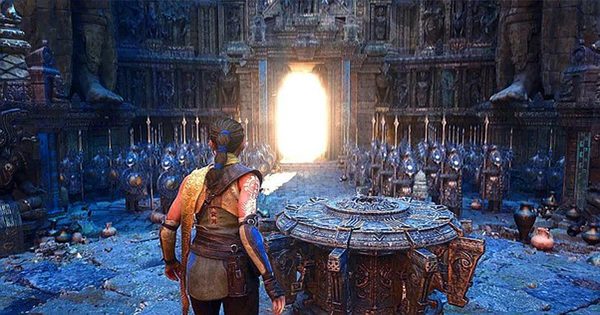The first public edition of Epic’s Unreal Engine 5, a huge multi-tool development environment for games and other 3D entertainment, was just published… Following that, Sony and the Lego family put up a $2 billion investment. What’s the big deal about a new edition of a gaming development tool, and why should you care? First, let’s talk about the software. Engines are the tools that creators use to produce and alter the images, audio, physics, and other parts of a 3D production, whether that production is a game, a film, or something more nebulous like an augmented reality experience.
Not long ago, you may have created your 3D models in one software, animated them in another, recorded the sounds in still another, and then repeated the process for game logic, lighting, physics, and a dozen other components of your project. Game engines have evolved to include more and more of this process in one location over time, however, specialised tools are frequently superior in specific aspects. Unreal Engine 5 (affectionately known as UE5) is the most powerful and integrated engine to date, combining high-end visuals and visual design with audio, lighting, animation, and other features.
UE5 in particular improves graphical fidelity by removing the requirement for developers to describe how an item is lighted and the degree of detail shown separately by dynamically scaling down the highest fidelity model, instead of using a universal lighting engine. These alone account for a significant portion of the effort involved in making a game appear attractive; dynamic lighting is difficult to do, and designers sometimes have to create many copies of each item and character with varied degrees of detail.
There are also built-in animation and sound design systems that integrate seamlessly with the rest of the engine, eliminating the need to import your work from another program. There are also special procedures for creating believable human faces and bodies, among other things. So, why should you be concerned about this?
Huge, amazing-looking games like “Horizon: Forbidden West” and “Elden Ring” would lead one to believe that “next-generation gaming” is already here. However, the possibilities of UE5 (and other engines in development) have yet to be fully used. Indeed, the games that will make full advantage of Unreal 5’s features are just now being revealed as in production. It’s difficult to define what constitutes a game next-gen. But it’s not just about the graphics. Consider a game where the lighting is fully dynamic, based only on what the player generates – wouldn’t it make for an excellent horror title? What about a game in which the environment may be demolished or built at whim, and not just as a bunch of gigantic cubes, but as planks of wood, mounds of mud, and sheets of metal? A detective narrative in which every room in a city may be searched and every individual questioned?
I’ll avoid using the M-word (you know what I’m talking about), but the basic reality is that Epic is at the forefront of digital entertainment that isn’t just games. Concerts (both real and virtual), VR/AR features, applications, and other projects all require the same toolset as games. These new forms of digital experiences require an accessible toolbox to progress from occasional high-cost marketing items (like an AR movie tie-in) to something anybody can produce, much as enhanced developer tools led to a profusion of applications when smartphones became popular. Unreal is trying to be a platform on which any digital entertainment can be developed, thus you’ll likely see “powered by Unreal Engine 5” on a lot of major and small works in the next years.
“The Mandalorian” demonstrated that virtual production, or filming a program inside a massive circular wall of screens, is a viable alternative for prestige media. Since then, VP has been adopted by a slew of other movies, with Netflix in particular embracing it to the extent of creating a massive, rotating set for the producers of “Dark.” Epic’s technologies, namely Unreal Engine, are responsible for most of this. The requirement for a high-fidelity 3D backdrop that responds in real time to camera motions and other changes (such as altering parallax or focal length) entails running a very sophisticated game on specialist hardware and rendering to a monitor the size of an entire movie theater.
It’s strange to believe that the Epic that creates Unreal is the same Epic that makes Fortnite, the same Epic that’s taking on Steam with a heavily subsidized game store, and the same Epic that’s taking on Apple’s App Store fees with theatrical stands. They’ve got a lot on their plates! The freemium model is one of the Unreal Engine’s hidden weapons. Any developer may download and use it, and if you end up releasing a commercial product, like a game, you only have to pay Epic after the first million dollars in income or a certain amount under other circumstances. That appeals to indie developers that seek to cut down on upfront costs and streamline their development process.
















